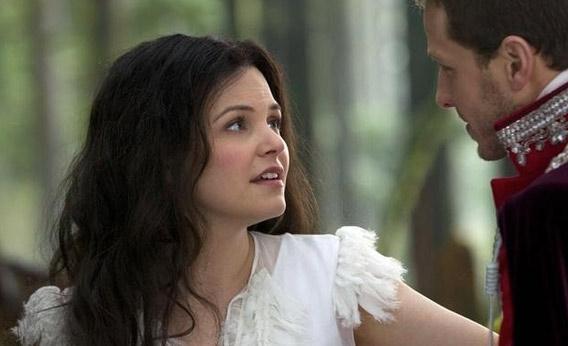I want to love Once Upon A Time, ABC’s drama about fairy tale characters who have been kicked out of their kingdom and stripped of all memory of their heroic pasts. The show combines two things I love: stories from the Brothers Grimm canon and powerful women. But as its second season began Sunday night, I couldn’t help but think that the show has a problem: a serious case of princess overdose.
The hit show, which splits time between the Enchanted Forest, where fairy tales take place, and Storybrooke, the New England town to which its characters have been magically exiled, wants to shake up the traditional dynamic of princesses and the princes who rescue them, but far too often, it falls into tired gender dynamics. One of its smartest decisions was to make Snow White (Ginnifer Goodwin) a reluctant princess, a woman who’s more interested in living by her wits and her sword in the forest than in making a good marriage. It’s fun to watch her hold up carriages and fight ogres in the woods, but once she’s in Storybrooke, where she’s known as Mary Margaret, she’s something of a milksop, reduced from her warrior princess days to teaching elementary school and volunteering in the hospital. There’s nothing wrong with niceness, but it’s a depressing comedown to think that a fairy tale, that most traditional of forms, could actually be more liberating for a woman than modern life.
As for the crop of princesses surrounding Snow: They are all pretty dull whether they’re in a land ruled by magic or not. Sleeping Beauty hasn’t gotten a chance to do much more than insist, once woken, that she’s eager to stay awake and catch up on the life she’s been missing. Belle’s stuck with the thankless task of reforming her boyfriend, Rumpelstiltskin, who in Storybrooke is a powerful businessman who goes by the name Mr. Gold. And Mulan, who showed up this week in an effort to both maximize diversity and Disney’s back catalog, was actually more multidimensional in animation than she is in live action, stripped of her humor and moxie and saddled with a secret passion for the prince in love with Sleeping Beauty.
It’s frustrating to see Once Upon A Time waste its time on flat, flimsy princess characters when it’s demonstrated that it can be genuinely daring in its reinterpretations of fairy tales and female power. One of the best episodes of the first season, “Red Handed,” centered on Red Riding Hood. In Storybrooke, Ruby is a diner waitress with long legs and short skirts, but in the Enchanted Forest, she was Red, a young woman with a lover whose life was touched by terrible violence. Jane Espenson, who wrote the episode, did something truly novel with the story: She revealed that Red Riding Hood was actually the wolf, possessed of power she couldn’t have imagined, but a danger to herself and those she loved if she didn’t figure out how to control her impulses. It was an amazing reimagination of an iconic character—and Once has done almost nothing with her since.
Princesses make Disney a lot of money, and it’s understandable why Disney-owned ABC would want to juice its parent company’s strongest brand. But there are other kinds of women in dark forests and castles, from resolute woodcutters’ daughters to runaway children to greedy fishermen’s wives. Ruby’s story is a reminder of all the options Once Upon A Time has that it’s not exercising. Unless the plan is to simply be a conventional show about princes and princesses, maybe it’s time to think about other kinds of women.
